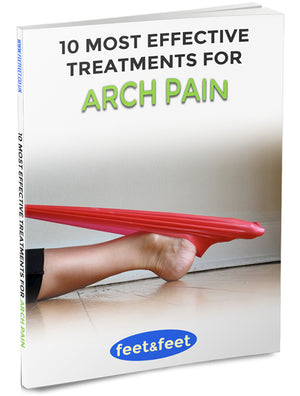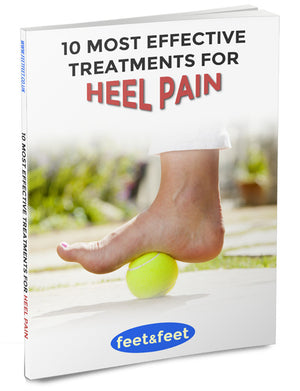Should You Undergo Surgery For Plantar Fasciitis?

Plantar fasciitis doesn’t usually require surgery and according to the NHS, less than 5% of their patients undergo surgery for heel pain and this is only where non-surgical treatments have not worked at all.
This article will focus on what plantar fasciitis surgery entails and whether it should be an option to consider.
An outline of other options to surgery will also be set out in the article to give you all the possible treatments for plantar fasciitis before considering surgery as a last resort.
Do You Need Plantar Fasciitis Surgery?
As stated earlier, plantar fasciitis doesn’t require surgery to remove the pain. Before surgery is considered, non-invasive treatments should be tried first to alleviate your heel pain.
The Beacon Medical Group (part of NHS) advises that most cases of heel pain can take up to 12 months to get better.
If the pain is still unbearable and treatments haven’t worked, this is when surgery could be an option. The NHS says that operation could only be considered if you are of a reasonable weight for your height and where plantar fasciitis hasn’t improved through the methods given.
What Does the Surgery Involve?
Plantar fasciitis surgery involves detaching a part of the plantar fascia from the heel bone to decrease the tension in the area.
This procedure is undertaken through a 3cm cut on the inside of your heel and is basically performed as open surgery which the NHS points out that this operation isn’t always safe or effective.
Another form of plantar release surgery is performed through endoscopy where a small incision is made and certain tools are pushed through the incision to access the plantar fascia.
This procedure has a much quicker recovery process of up to three weeks but requires a highly skilled surgical team to perform this. This means a longer waiting time for this procedure.
Depending on the condition of your heel and plantar fasciitis area, surgeons may also remove damaged tissue affecting the area and some of your heel bone to reduce more of the tension and enable the area to heal more effectively.
Pros
- Good Success Rate – The NHS says that most people who undertake surgery feel better after. According to Wheeler et al’s study in 2014, 50% of cases were successful with no pain and for those who weren’t pain free, the average figure for improved pain after surgery was 79%.
Cons
- Reduction in Foot Function – In Colin Dombroski’s The Plantar Fasciitis Plan Book, Dr Alexander points out that cutting away some of the plantar fasciitis can result in the loss of arch support by up to 25%. This is particularly not ideal for anyone with flat feet.
- Pain could be worse for those who have long-term heel pain – Studies have shown the results post-operation could be worse for people who have had heel pain for a longer period of time.
- Recovery Time and Side Effects – The recovery time after surgery can take anything from 3-6 weeks but you may not realise the impact until months down the line when you are fully recovered. During the recovery stage, there may be side effects of tingling or numbness in the operated foot and you would be restricted from certain activities.
Availability and Cost
Your GP may refer you to see a podiatric surgeon or orthopaedic surgery if your foot pain hasn’t improved after 12 months and this is if the pain is severe. It is uncertain how long you would have to wait for surgery if it does get to that point.
However, if you go through a private surgeon, typical costs range from £1,250 just for the procedure itself so you would need to also take into account consultation, discharge, aftercare and other costs.
Alternatives to Plantar Fasciitis Surgery
The following non-invasive treatments may also help those who experience long-term heel pain:
Shock Wave Therapy
In shock wave therapy for plantar fasciitis, high energy acoustic waves (aka shock waves) are delivered to the plantar fascia to make your plantar fasciitis ‘feel a bit worse’ in order to bring about healing to improve it.
Low-dose therapy is painless and usually done in sessions but high-dose therapy can be a bit more painful with some superficial bruising at the application site.
The procedure is straightforward and quick where ultrasound gel or local anaesthesia is applied before the shock waves are delivered to your foot via a wand device.
Cortisone Injections
Cortisol is an anti-inflammatory hormone in your body and cortisone is synthetically produced to mimic this and injected into your foot through a needled syringe to relieve plantar fasciitis pain.
This treatment is one of the cheaper options and works for some people but it comes with many caveats as it can be painful; result in a temporary flare up of infection like symptoms; and according to the Beacon Medical Group, a maximum of three cortisone injections can be given in year.
Frequent injections run the risk of rupturing your plantar fascia and a weakening of the tissues around the injection area.
Platelet Rich Plasma Injection
A bit of your blood is taken to use for your injection because your platelets have connective tissue growth and promotes healing. Your platelets are spun in a centrifuge until its concentration levels are above the usual level before it is injected directly into your plantar fascia.
Other Plantar Fasciitis Treatments
Some of the earliest forms of aids used for plantar fasciitis that can still be effective to this day include:
Custom Orthotics
A pair of orthotics is made to fit the contours of your foot through the use of a 3D cast which will fit inside your shoes to help alleviate pressure on your plantar fasciitis and provide support through the fitted cushions.
There are two types which are accommodative (redistributes pressure around the foot) and corrective (guides your foot into a ‘correct position’).
Off-the-Shelf Orthotics
Devices such as heel cups and molded insoles are placed inside your shoes to help to ease your discomfort and provide some cushioning to absorb impact when you’re on your feet.
These types of orthotics are designed to fit the average human foot and may not necessarily work for everyone but a heat moldable orthotic can be molded to fit your foot.
Night Splints
Usually used 12 to 16 weeks into your treatment plan or if orthotic therapy isn’t working, a night splint is similar to a brace that’s strapped to the front or back of your leg to keep it in a position to stretch out your calves and plantar fascia.
This prevents the morning pain from occurring as there’s no risk of tearing the half-healing soft tissue in your foot that usually happens when your foot is in a relaxed position. This aid can be used in combination with other orthotic treatments or on its own.
Ice Therapy
Typically used within the first few days of the onset of plantar fasciitis, icing can help to relieve the pain and any swelling or inflammation in your injured foot.
This will also help to numb your foot and encourages blood flow to the area through the contraction of your blood vessels.
Icing can be easily done by freezing a filled water bottle and rolling your entire foot over it for a good 15 minutes, several times a day and this will also provide a massage to your foot.





Comments
Leave a comment